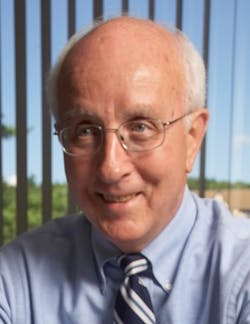Microprocessing sets the tone for 2017

Maybe it was the roaring success of this year's SPIE Photonics West, which has more of a focus on microprocessing as opposed to the macroprocessing focus of Fabtech, as I seem to be inundated with news about ultrafast-pulse (UFP) lasers and processing technology. For example, in the last issue of ILS, half of the editorial was on UFP processing technology. This issue, I went the other way—so macro-applications are dominant.
Lest you think I was prescient, consider the ILS editorial calendar was actually planned last August before I took into account the micromachining atmosphere at Photonics West and MD&M.
In this issue, we feature welding materials using a technique known as "beam wobbling" to manipulate a small, highly dynamic weld pool specifically for laser welding dissimilar thin metal combinations that were previously considered unweldable. Bryce Samson and colleagues at IPG Photonics think this technology can be extended to laser power up to 12kW (see page 12).
On another thickness scale, Jan Frostevarg and Jonas Näsström (Luleå University) suggest that narrow-gap multi-layer laser welding with a defocused laser and resistance-heated filler wire can produce deep welds with low base material dilution and more adaptable fusion zone properties (see page 16).
In the continuing search for lightweight automotive seat structures, Geert Verhaeghe and associates at Faurecia assess laser-based joining of metals to plastics in a two-part process, comprising a microstructuring and a joining step, to join a prototype lightweight hybrid backrest seat structure (see page 9).
And Axel Luft at Laserline utilizes a homogenizing module to split a single diode laser beam to create three laser spots for brazing hot-dip galvanized steel, where two smaller spots evaporate zinc and the bigger main spot is used for the brazing process. They also posit that a tailored spot geometry could facilitate smooth tactile outer skin aluminum welding (see page 19).
On the micro-scale, Keming Du et al. (EdgeWave) describe a short-pulse, high-peak-power, high-pulse-repetition-rate, high-beam-quality, and high-average-power laser capable of producing beams with circular through line-shaped one- and two-dimensional top-hat beam profiles with a rectangular cross-section to process a variety of unique applications with added value (see page 22).
And finally, Mandy Gebhardt (3D Micromac) shows how thermal laser separation is used to induce mechanical stress to separate brittle semiconductor materials into dies, with improved edge quality while increasing manufacturing yield and throughput and reducing dicing cost per wafer up to an order of magnitude (see page 25).
Switching thoughts—two months into a new year and one month after a new administration in Washington, we are getting messages that the US is having a strong start in the manufacturing sector. Business has picked up and factories are running at high capacity levels. Investment money seems to be looser and we hear talk of expansions from a number of companies who stood pat last year.
Optimism, a word preceded by "cautious" last year, is being bandied about by industrialists in North America, and we have not heard the dreaded "recession" word from any sector. The new double-R, Regulatory Reform, is the key word among CEOs today. Many forecasters anticipate that the US will return to driving the world economy in 2017. No predictions from me, as I have my fingers tightly crossed and can't type anymore.
About the Author

David Belforte
Contributing Editor
David Belforte (1932-2023) was an internationally recognized authority on industrial laser materials processing and had been actively involved in this technology for more than 50 years. His consulting business, Belforte Associates, served clients interested in advanced manufacturing applications. David held degrees in Chemistry and Production Technology from Northeastern University (Boston, MA). As a researcher, he conducted basic studies in material synthesis for high-temperature applications and held increasingly important positions with companies involved with high-technology materials processing. He co-founded a company that introduced several firsts in advanced welding technology and equipment. David's career in lasers started with the commercialization of the first industrial solid-state laser and a compact CO2 laser for sheet-metal cutting. For several years, he led the development of very high power CO2 lasers for welding and surface treating applications. In addition to consulting, David was the Founder and Editor-in-Chief of Industrial Laser Solutions magazine (1986-2022) and contributed to other laser publications, including Laser Focus World. He retired from Laser Focus World in late June 2022.